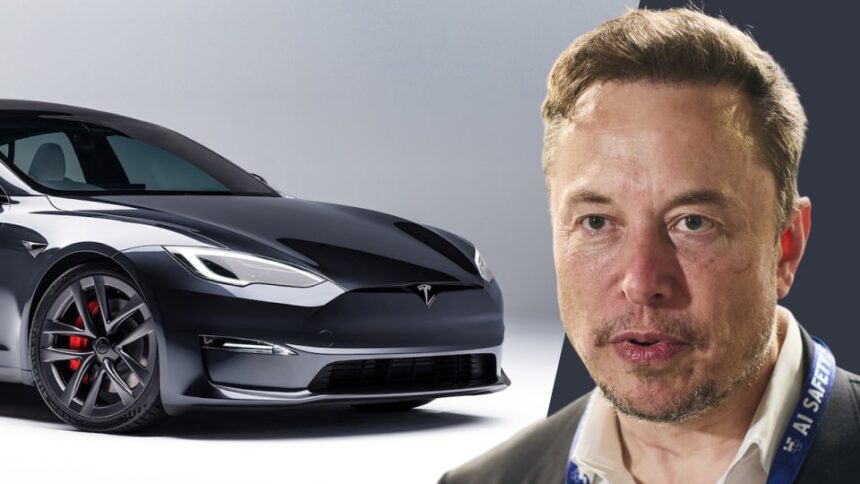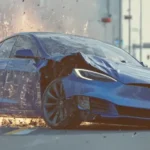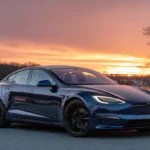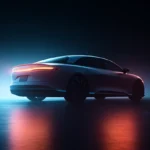A six-year-old promise meets a stubborn marketplace
Back in 2019 Elon Musk told investors that Teslas equipped with Full Self-Driving would soon be worth “$100,000 to $200,000” as robotaxi capability arrived, making them “appreciating assets” rather than normal depreciating cars. He reiterated the point several times, most recently at the 2025 shareholder meeting, arguing that once FSD reaches Level 4 the cars will earn income and climb in value.
Reality disagrees—for now. Cox Automotive’s May 2025 EV Market Monitor shows average used-Tesla transaction prices down 10.1 % year-over-year, outperforming only a handful of niche luxury EVs. A separate Carscoops roundup lists the Model S as the single biggest price dropper among mainstream EVs in June.
Why used prices keep drifting lower
| Force pulling prices down | Evidence (2025) | Effect on resale |
|---|---|---|
| Factory price cuts | Tesla trimmed MSRPs five times between Jan 2024 and Mar 2025. | Older cars must follow those cuts, lopping thousands off book value. |
| Off-lease tsunami | 123 K leased EVs—half of them Teslas—hit the market in 2025; 329 K more arrive in 2026. | Higher supply = lower prices. |
| Non-transferable FSD | FSD carries over only during limited “one-time” promos. | Buyers pay little for software that might vanish at trade-in. |
| Still-supervised autonomy | FSD v12.6 is impressive but remains Level 2; drivers must keep eyes on road. | Market discounts “future” value until Level 4 approval. |
| Cheaper competitors | BYD and Hyundai bundle robust ADAS at no extra charge. | Buyers compare free features vs Tesla’s $9 k–$10 K option. |
FSD’s shifting price tag and elusive payoff
Tesla raised the FSD add-on by $1,000 in May 2025, the fourth hike since 2022. Morgan Stanley still models a $15 K price by 2026, assuming major capability jumps. Yet until regulators sign off on true driverless operation, most used-car shoppers treat FSD as a fancy Level-2 assist worth maybe a couple of grand—barely offsetting the depreciation triggered by Tesla’s own sticker cuts.
Crucially, dealers and Tesla’s trade-in tool assign almost zero book value to an embedded FSD license. Complaints date back to 2020 and continue today. House-like appreciation is hard to imagine when software equity evaporates the moment you upgrade.
The transfer catch: musical chairs every quarter
Yes, Tesla has allowed “one-time” FSD transfers—four times so far—but only for buyers trading up to a new Tesla within narrow delivery windows. Private-sale buyers get no such perk, so used prices ignore the $8–$10 K sunk cost of the license. Imagine a home that loses its kitchen every time it changes owners; no realtor calls that an appreciating asset.
When could Musk’s vision finally materialise?
- Regulatory green light for Level 4. Tesla must move from “Supervised” to genuinely driver-optional robo-taxis across multiple U.S. states.
- Platform-agnostic revenue share. Owners would need a guaranteed income split—from robotaxi fares—to bake future cash flow into resale math.
- Permanent, friction-free FSD transferability. Software equity survives only if it sticks with the car.
- Stable new-car pricing. Manufacturers must stop undercutting their own residuals with surprise discounts.
Analysts at Benchmark Minerals think these stars might align “late decade,” noting that real estate analogies work only if the asset both throws off cash and sits in a constrained-supply market—two boxes the current EV landscape does not tick.
Investor vs owner takeaways
For shareholders, Musk’s rhetoric supports a software-margin thesis: if FSD revenue per car rises, Tesla’s valuation gets autopilot tailwinds even as hardware margins thin. For owners looking to sell, the lesson is simpler: monitor FSD transfer promos, document software version history, and price realistically. The market still treats Teslas like consumer electronics—cool, but depreciating.
Conclusion
Elon Musk’s vision of Tesla appreciating “like houses” hinges on a future that hasn’t arrived. Until unsupervised robo-taxis generate income and FSD licenses stick to the VIN forever, used prices will behave like, well, used-car prices—slipping with supply, miles and model-year age. House-like equity remains on autopilot hold.









